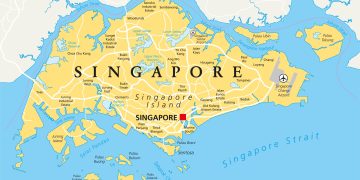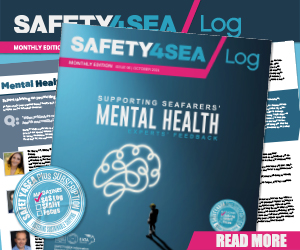UK MAIB has issued a report on the investigation of a Chief Officer’s fall from a hatch cover on board the general cargo ship Norjan at Southampton, UK on June 18th, 2014.
At 1445 on 18 June 2014, the chief officer of the general cargo ship Norjan was injured when he fell 2.4m from the ship’s cargo hatch cover to the main deck. Norjan was berthed in Southampton and was loading a cargo of privately owned motor yachts. The cargo operation was organised by the specialised transportation company Peters and May Ltd, and was overseen by one of its loadmasters. The chief officer was acting as the ship’s cargo officer and was supervising the operation in consultation with the loadmaster.
During the final stages of loading the first motor yacht the loadmaster asked the chief officer to check and adjust the yacht’s alignment with its cradles. To do this, the chief officer went to the stern of the yacht, which was close to the unfenced edge of the hatch cover, and grabbed hold of its rudder. Once the yacht was lowered onto its cradle chocks the chief officer went to return to his previous position on the deck and, as he did so, he stumbled and lost his balance. Realising that he was about to fall off the hatch cover, he twisted his body and oriented himself to land feet-first on the deck below. The chief officer suffered multiple fractures to both of his ankles on impact, and was unable to return to work for 12 months. Norjan’s hatch covers were regularly used to carry containerised and non-standardised deck cargo, and the crew treated them as normal working decks.
Work at height and the management of fall hazards during cargo operations were discussed in the vessel’s safety management and cargo securing manuals. Furthermore, the company’s generic risk assessment for deck cargo operations prescribed the use of temporary barriers to prevent falls from height. However, Norjan did not carry portable barriers or temporary fencing equipment and no fall prevention or fall arrest equipment was used during the loading operation.
It was apparent that both the crew and the Peters & May loadmaster had a very limited perception of the potential risks involved in the cargo loading operation: a detailed loading plan had not been produced; the crew had not been properly briefed; and the roles and responsibilities of the chief officer and loadmaster were confused. Had a task-specific risk assessment been carried out and a cargo securing safe access plan been developed, danger zones could have been identified and appropriate controls put in place.
Following the accident, Norjan was detained by the UK’s Maritime and Coastguard Agency, and its crew painted the edges of the hatch covers yellow and fabricated an ad-hoc portable fencing system for use during deck cargo operations. Recommendations to ensure that the safety lessons identified in this report are addressed at a company level have been made to Norjan’s managers, Reederei Erwin Strahlmann GmbH & Co. KG and Peters & May Ltd
Work at height regulations
The UK’s Merchant Shipping and Fishing Vessels (Health and Safety at Work) (Work at Height) Regulations 20107 were introduced to satisfy the requirements of the EU work at height Directive. The regulations define work at height as:
work in any place on a ship…….where, if the measures required by these Regulations were not taken, a person could fall a distance liable to cause personal injury
The regulations require that work at height is properly planned by a competent person, appropriately supervised, and carried out in a safe manner.
The regulations also require that employers ensure that risks are minimised and, specifically, that where necessary appropriate safeguards are put in place to prevent falls, or where that is not possible, to arrest falls should they occur. The MCA provided details and guidance on its interpretation of the regulatory requirements in its Marine Guidance Note (MGN) 410 (M+F) and its Code of Safe Working Practices for Merchant Seamen (COSWP).
Conclusions
Safety issues directly contributing to the accident that have been addressed or resulted in recommendations
1. The chief officer fell from the hatch cover to the main deck 2.4m below because he stumbled and lost his balance while working close to the unfenced edge of Norjan’s hatch covers. [2.2]
2. The chief officer was injured because there was nothing in place to arrest his fall. [2.2]
3. Working on the hatch covers was a day to day activity; without edge protection, the risk of falling off the hatch covers was ever present. [2.3.1]
4. The crew and the loadmaster gave insufficient regard to the risks posed when working on the hatch covers; their perception was that the risk of falling off the hatch covers could be controlled by remaining alert to the hazard and taking care when working close to the edges. [2.3.2]
5. The lifting operation on board Norjan was not properly planned, appropriately supervised or carried out in a safe manner. [2.4.1]
6. The roles and responsibilities of the loadmaster and the ship’s cargo officer were unclear to the crew. A detailed loading plan and a crew briefing would have avoided any confusion and might have resulted in the operation being conducted in a safer manner. [2.5]
7. The vessel did not carry the type of ready use portable safety barriers prescribed in its risk assessments; had it done so the likelihood of the crew fencing off the exposed edges of the hatch covers; and therefore preventing the accident, would have increased. [2.6]
Further details may be found by reading the report
Source: UK MAIB

































































